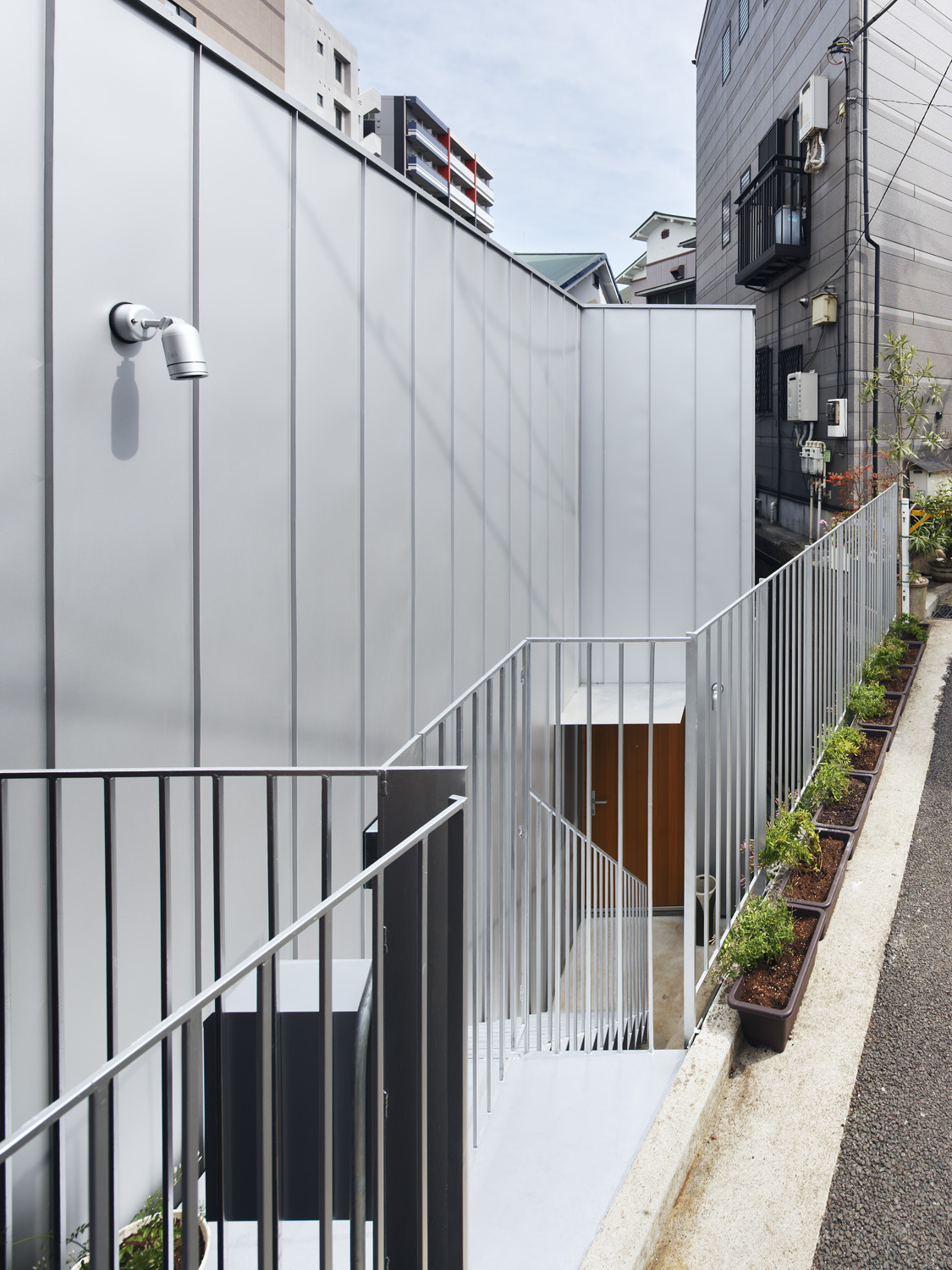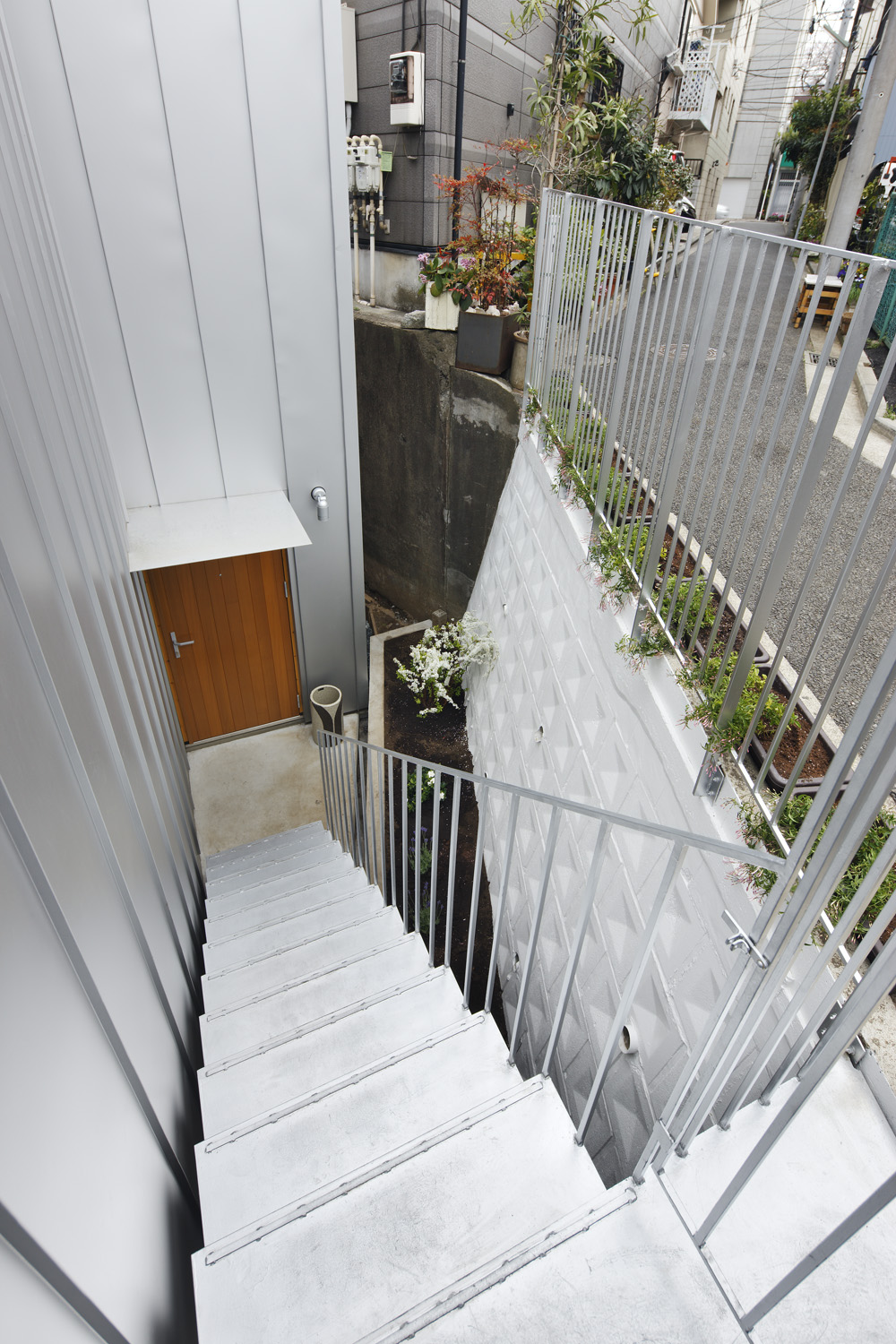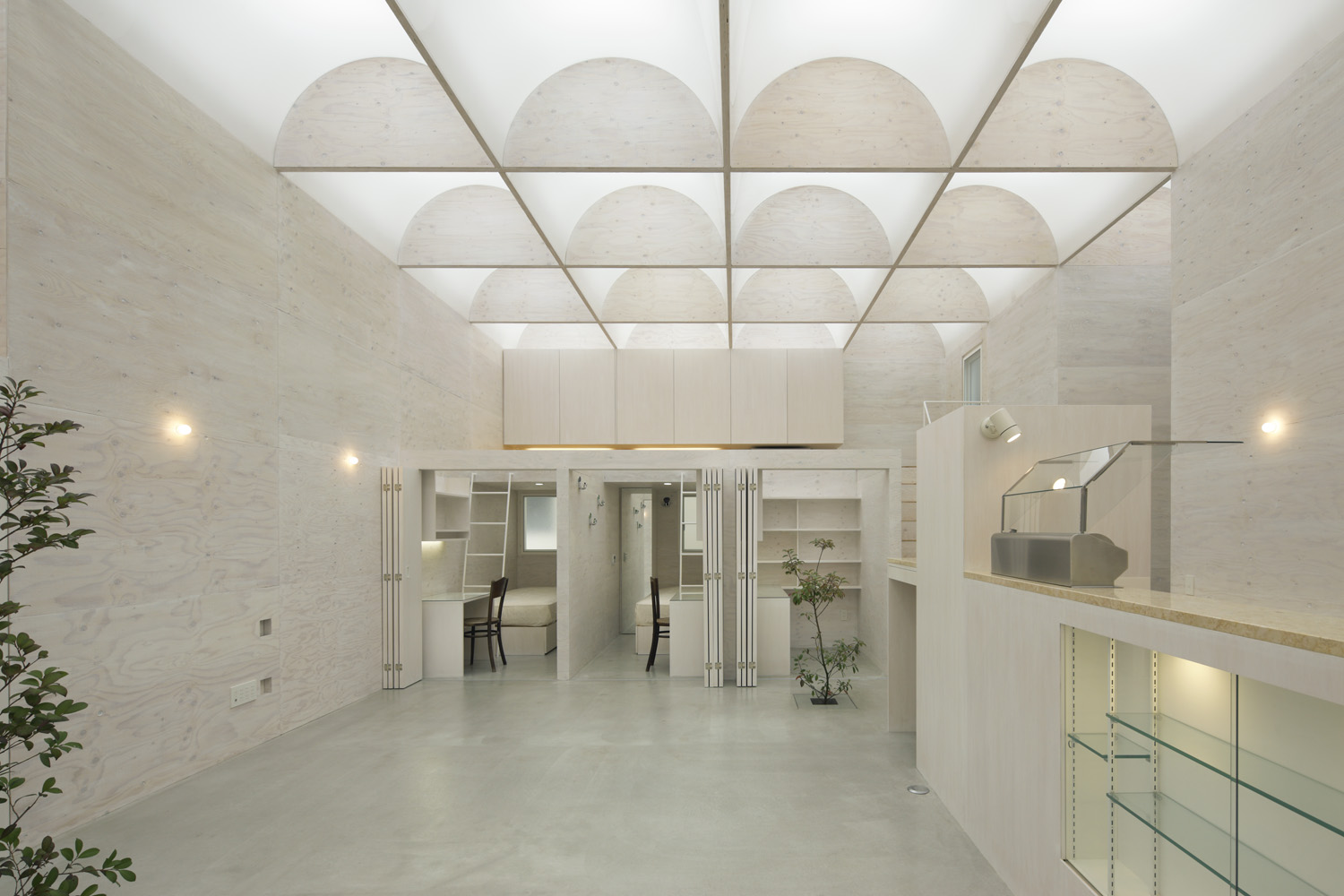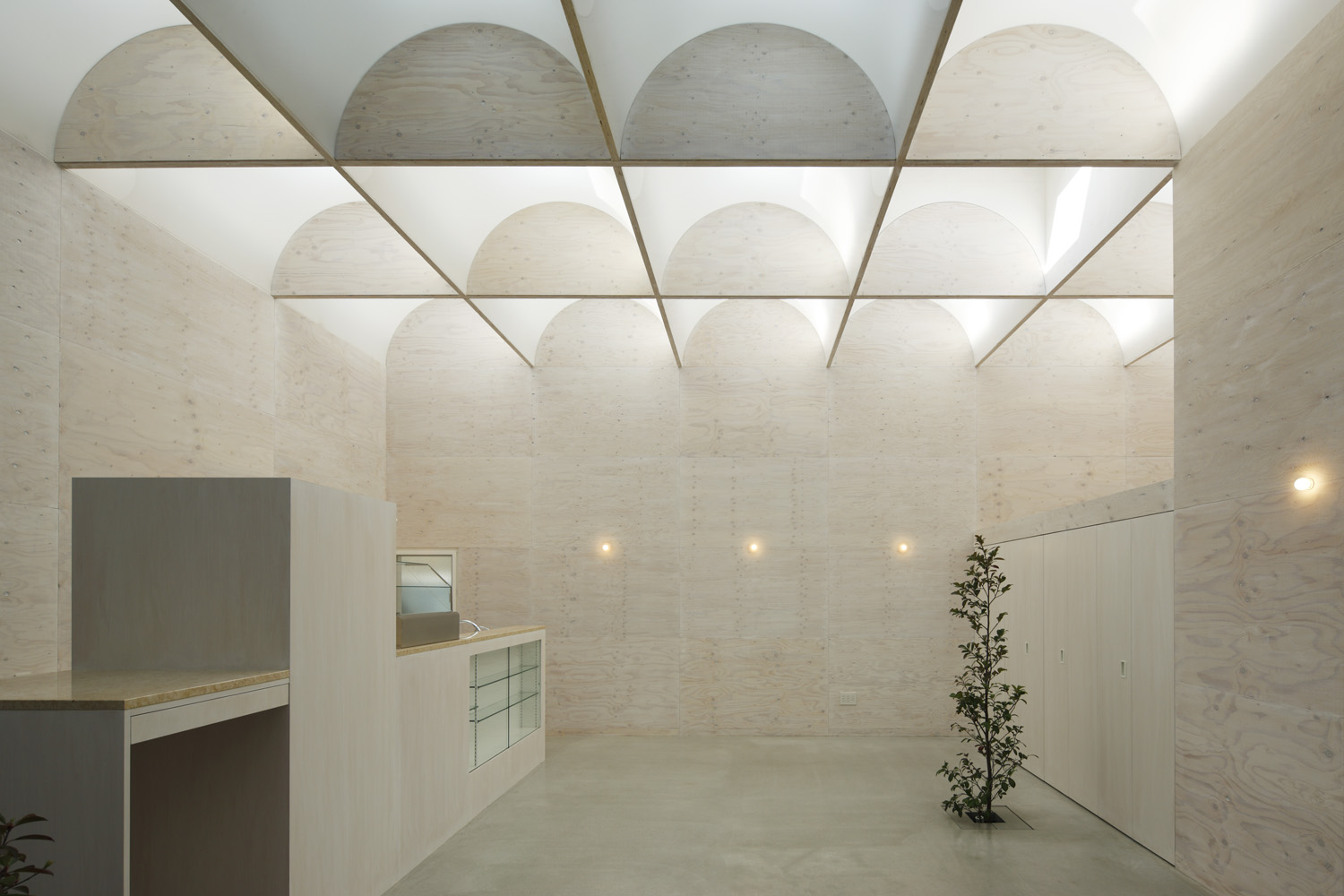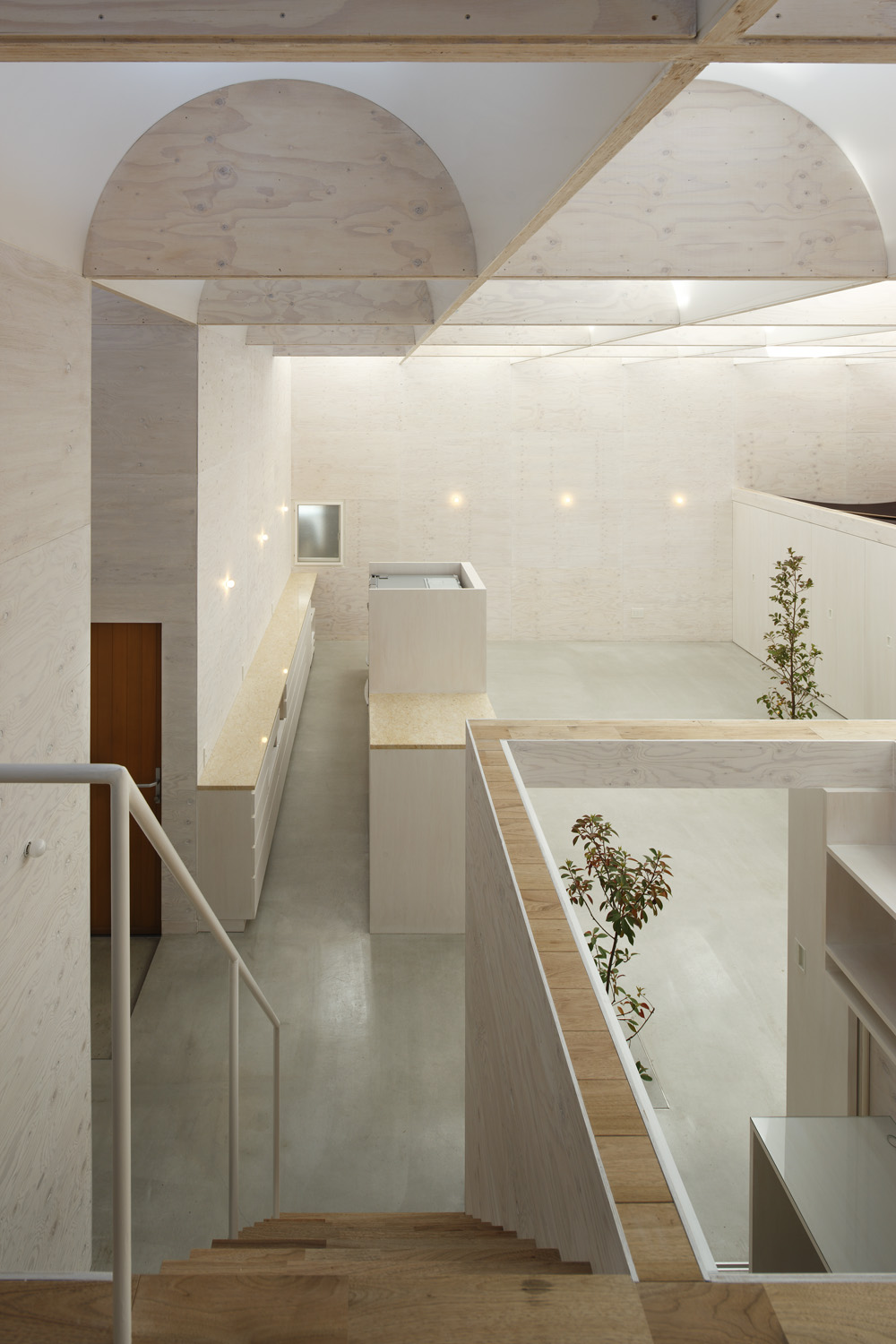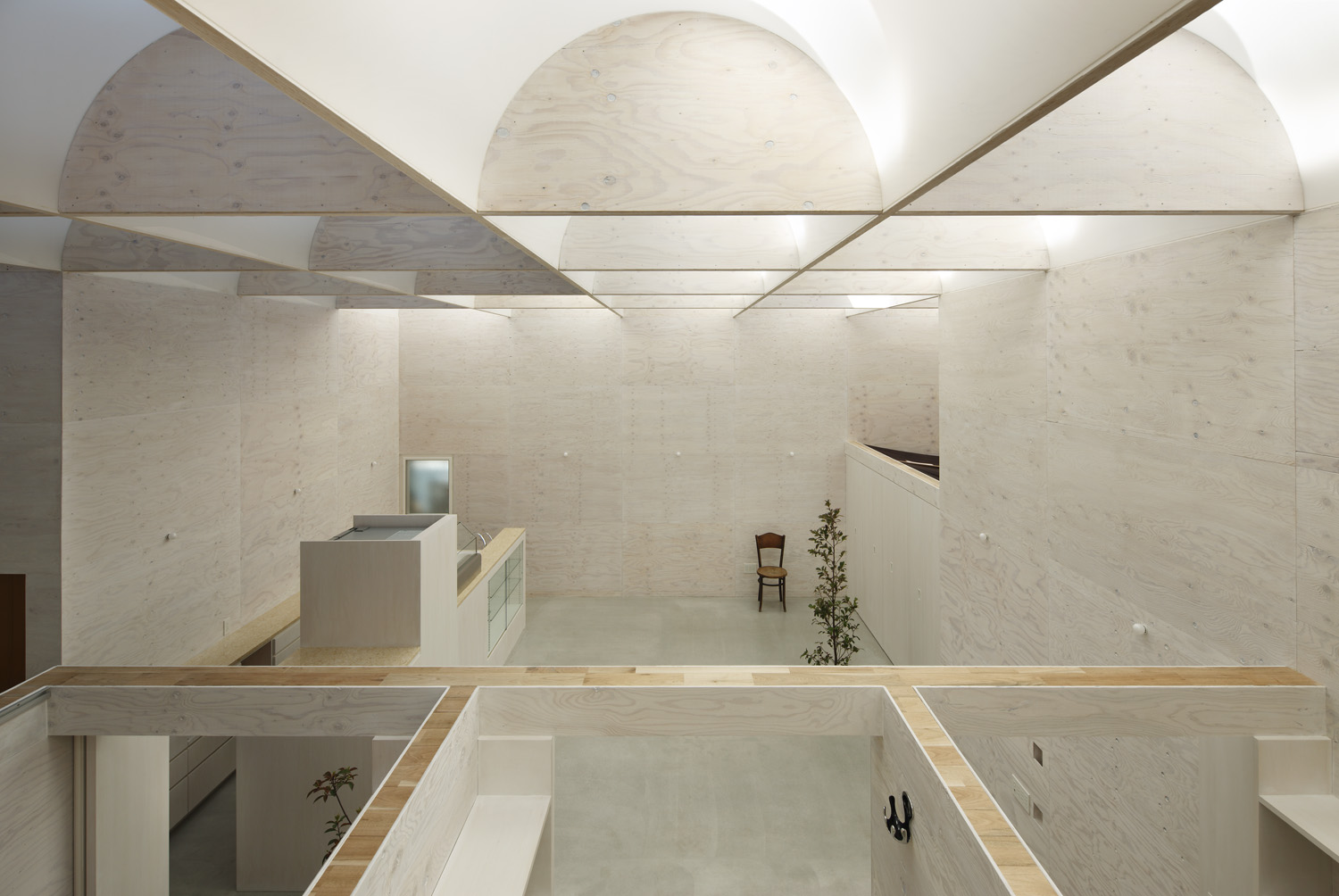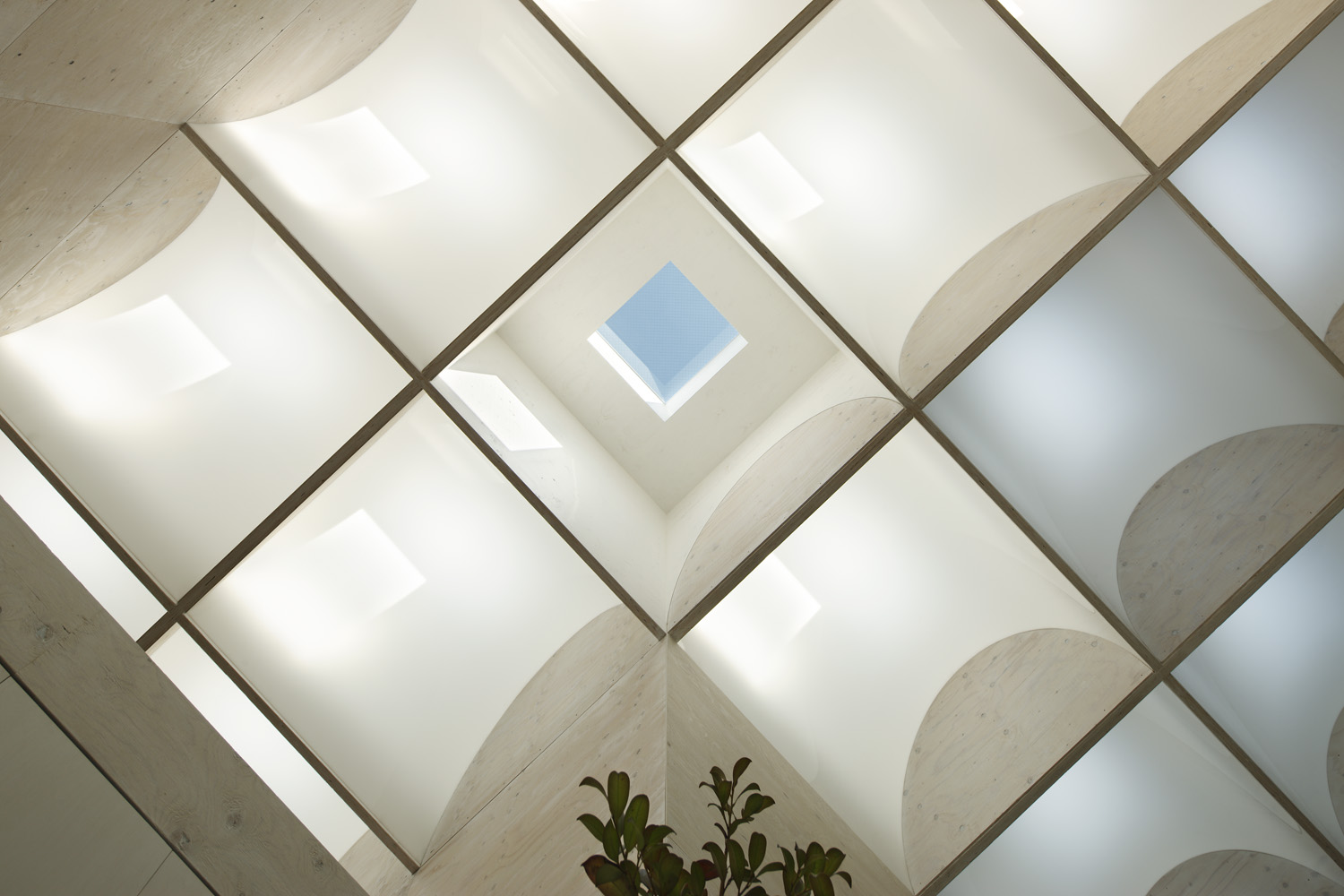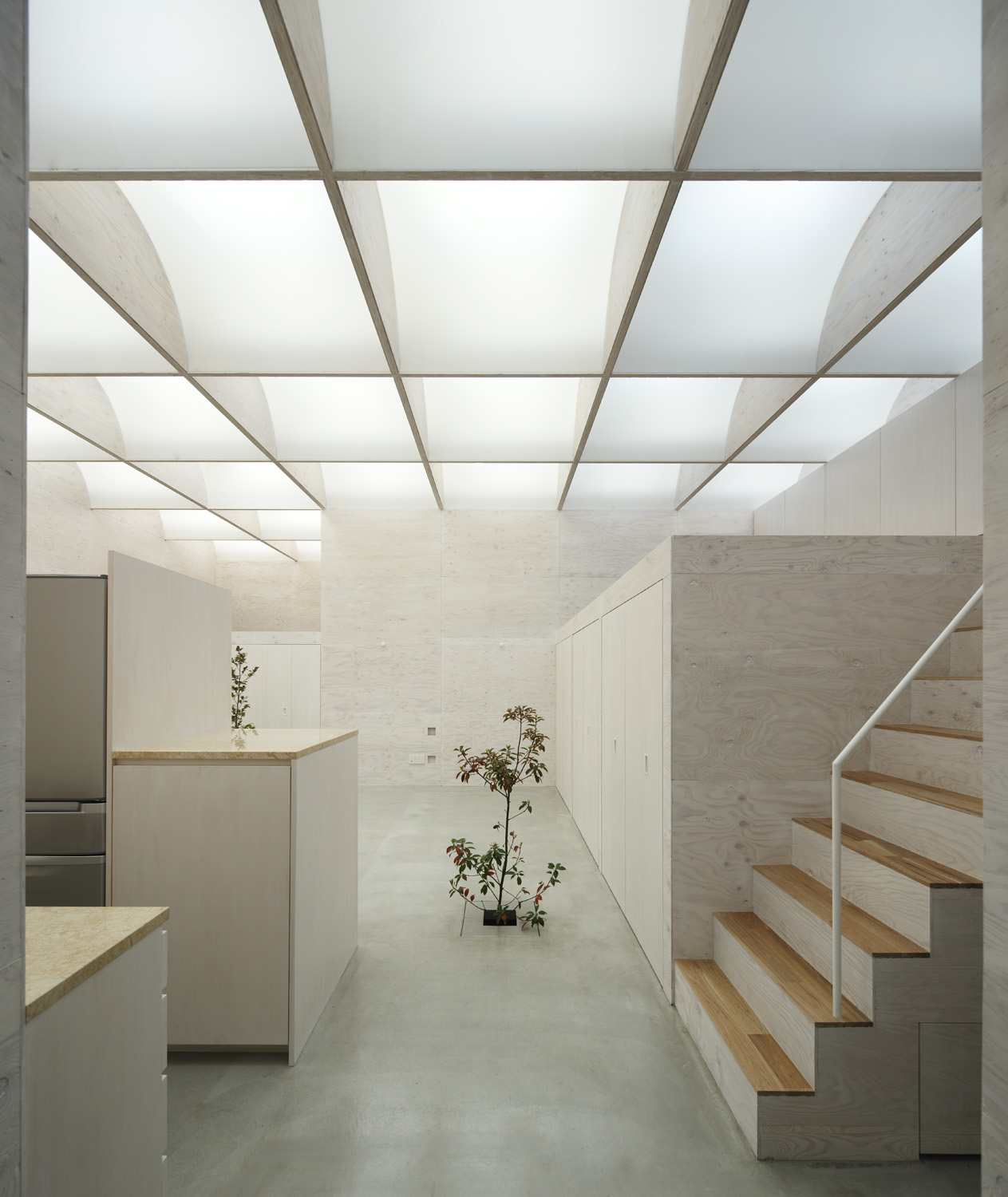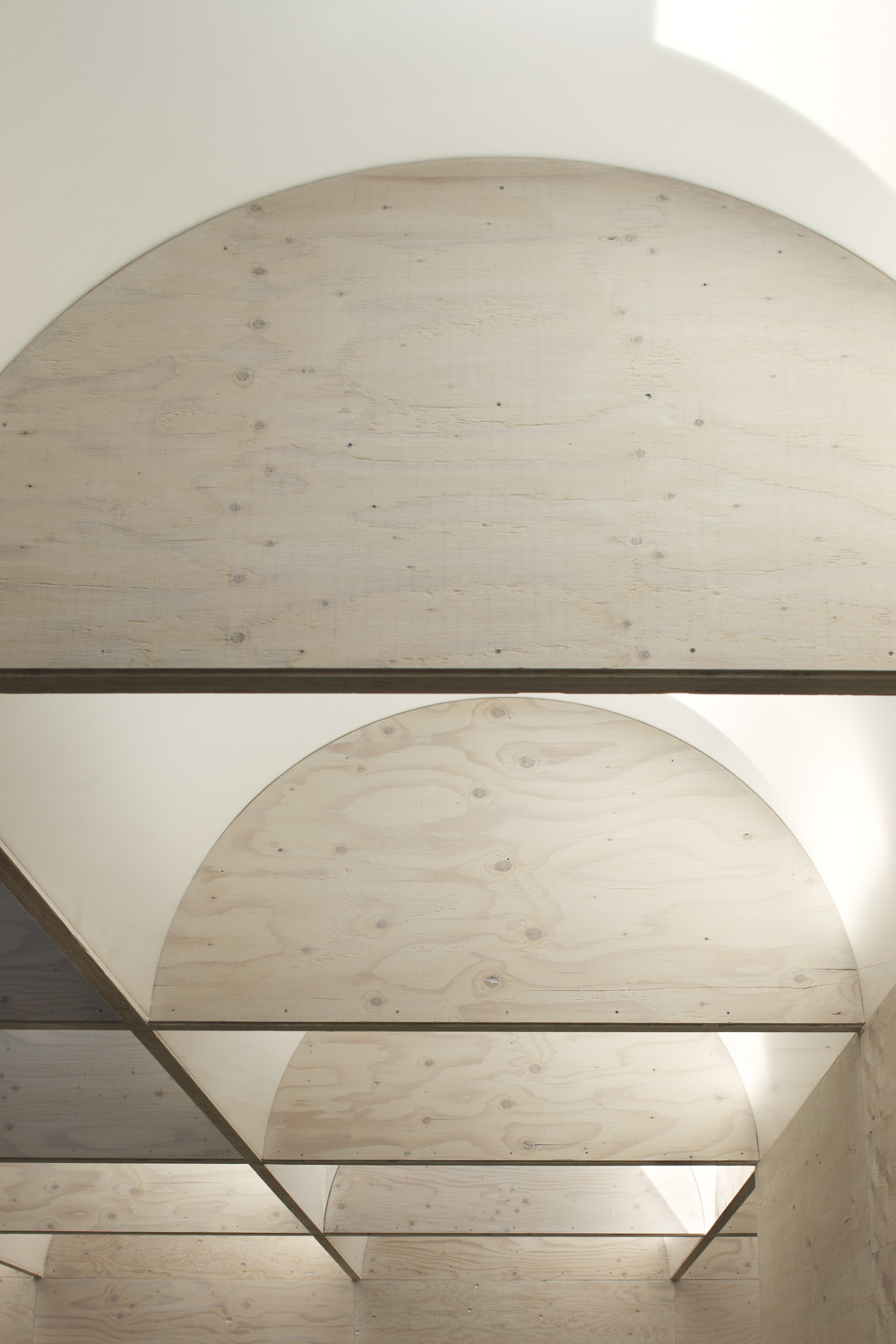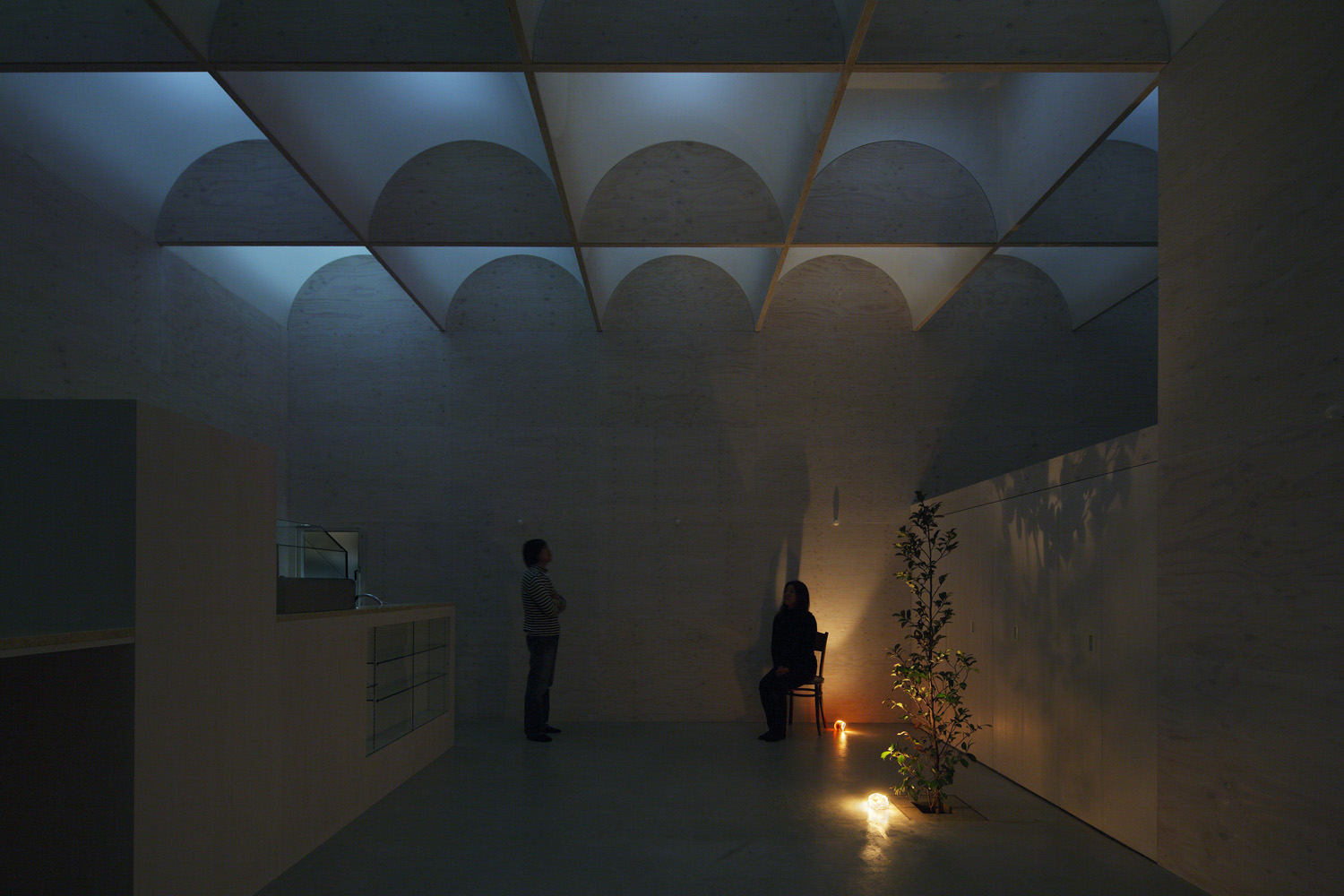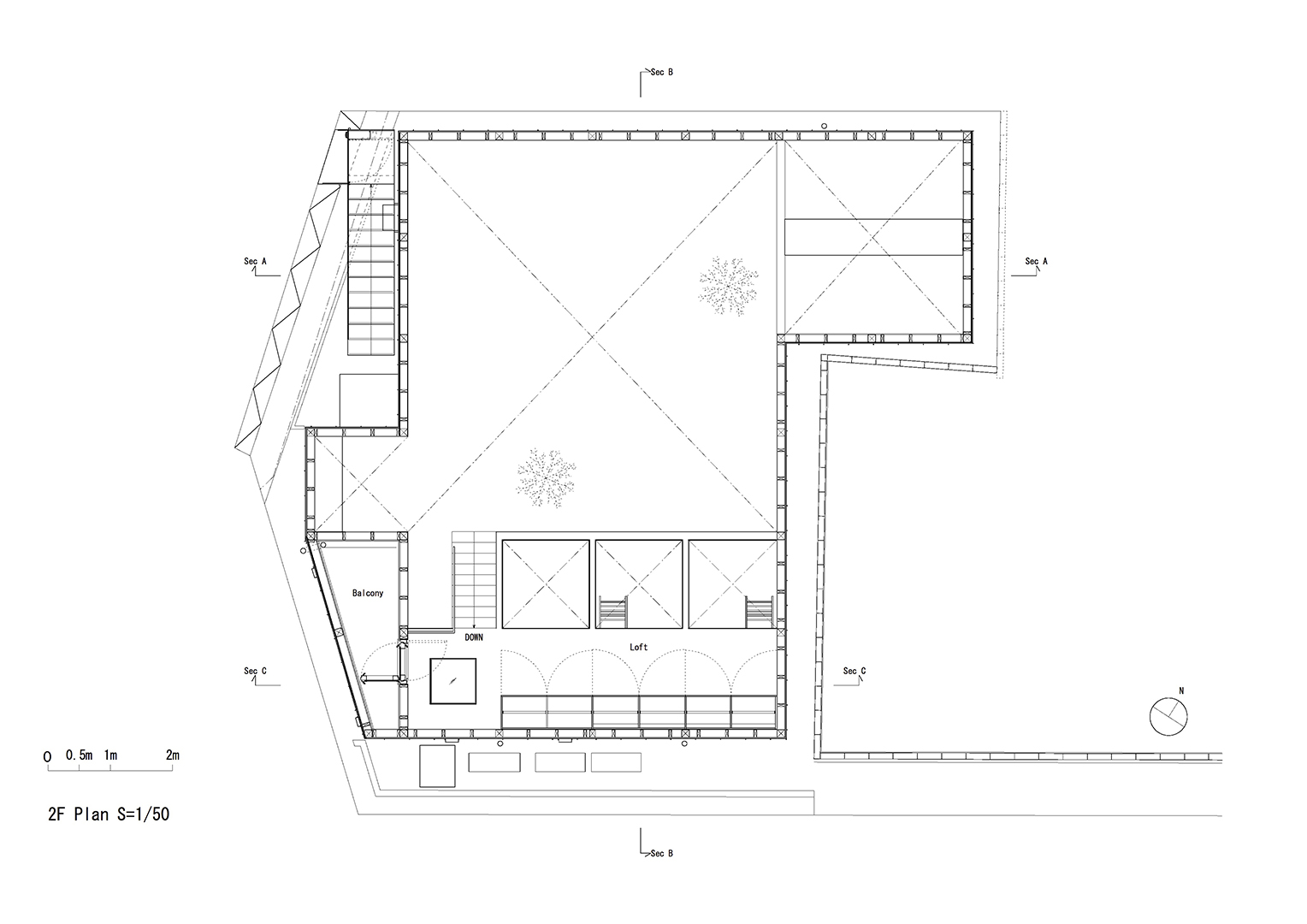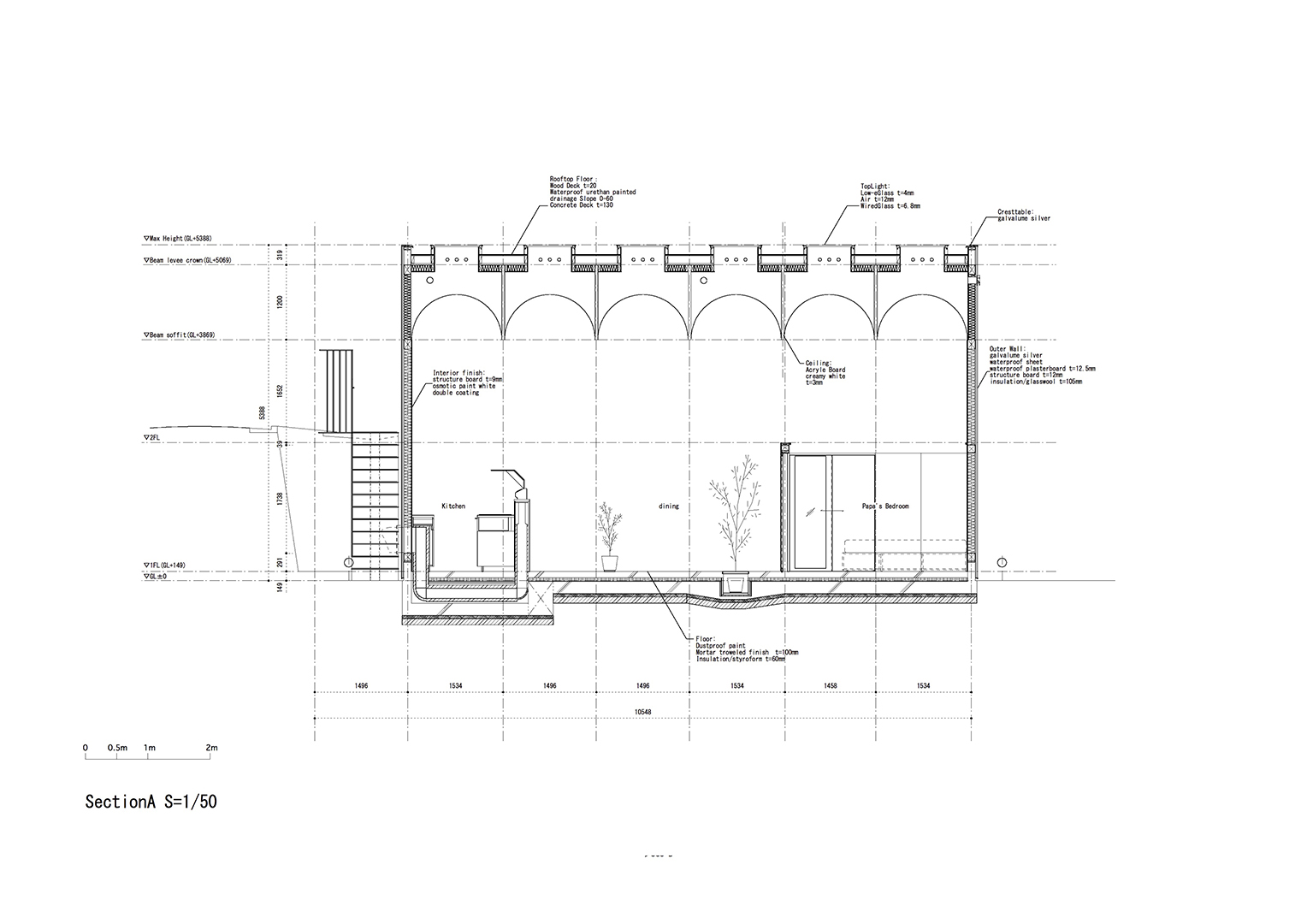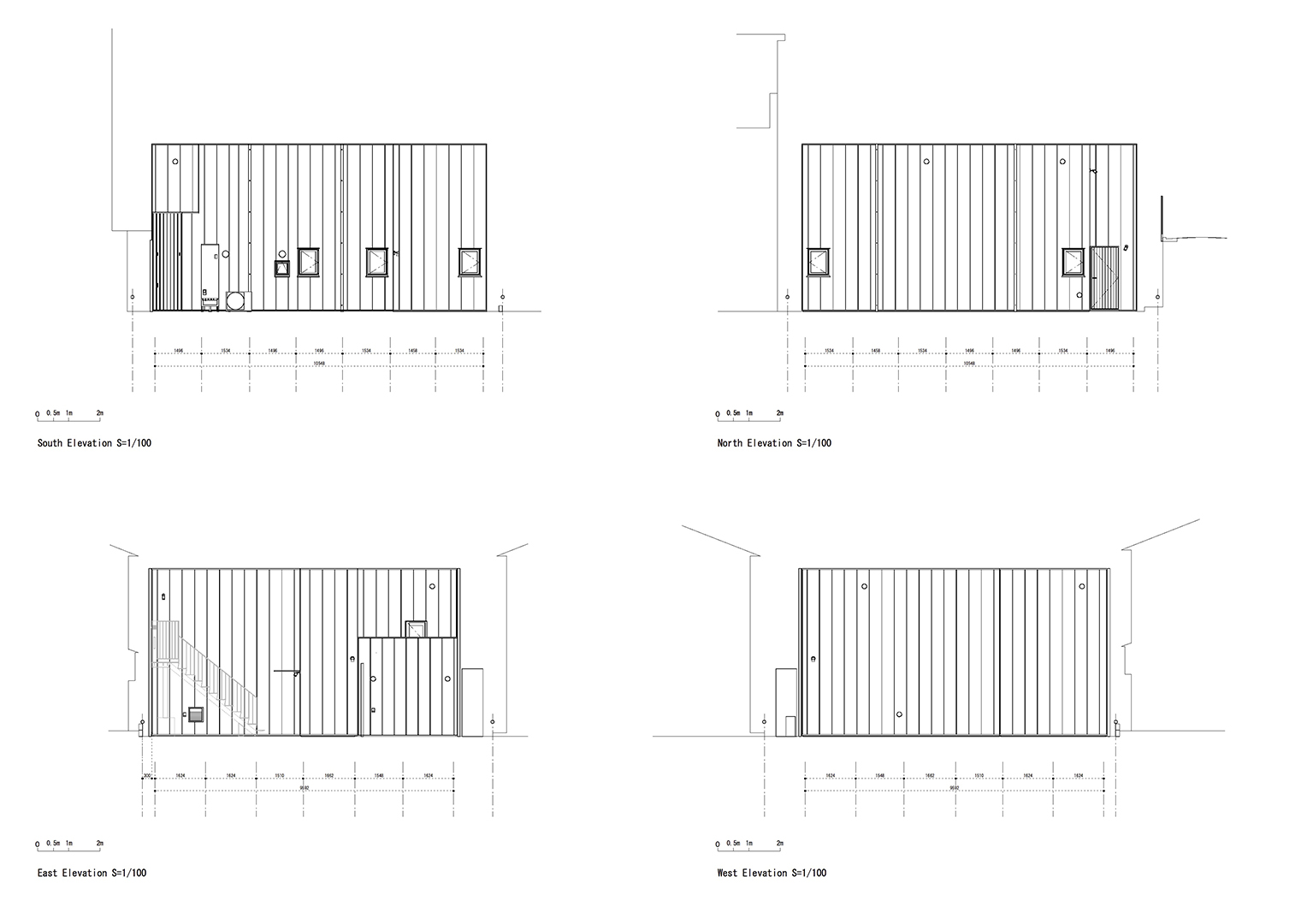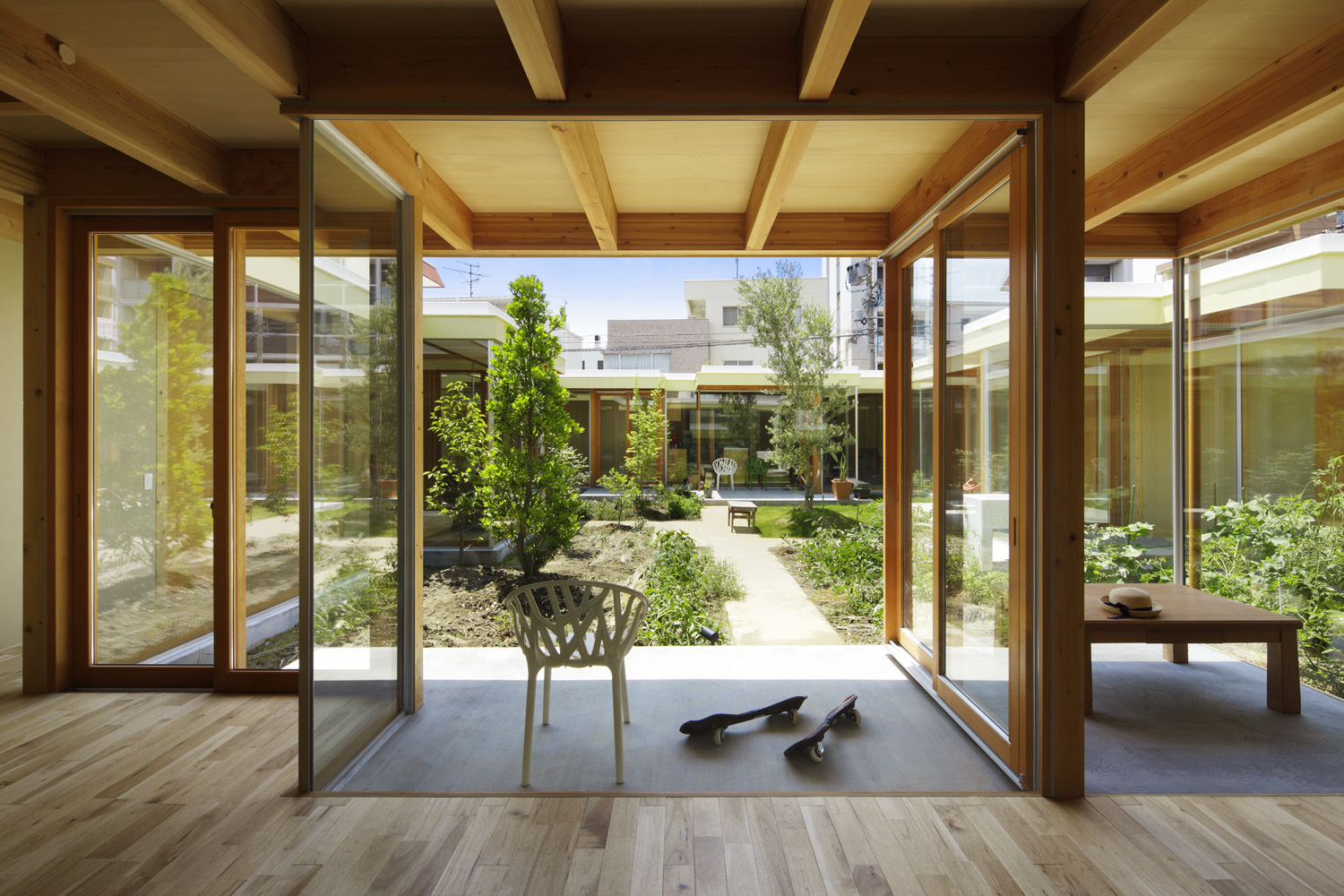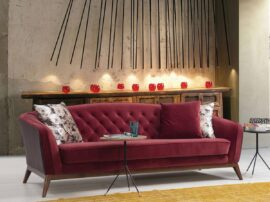The site is five minutes walk from the railway station and is densely surrounded by individual houses, high-rise residential towers, and offices. Moreover, the site’s ground level is about 3m below the frontal road, making the site literally a valley floor among the surrounding buildings. At noon in the winter, there is no direct sunlight. Even the skylight from the top seemed precious. Leveraging this light coming from above, a house was designed for a couple and two children.
The house is a single-story one room with a high ceiling. To allow the occupants to experience the expansion of the ceiling and its expressions in each room, the master bedroom, the children’s room(s), and the study are divided by doors and furniture about half the height of the ceiling. Because transparent top lights would reveal the inside completely when viewed from the surrounding towers, it was decided from the beginning to place a ceiling beneath the lights. However, instead of seeing the sky directly, the design sought to install a ceiling that allows you to see the small changes in the clouds and their expressions, and to create an interior in which you could fully experience the expressions of the exterior. The ceiling consists of acrylic vaults, which pull in the expressions of the light and sky from the glass top lights and softly project them to the ceiling. Moreover, the materiality of the mortar floor and larch plywood walls work together with the detailing of the white acryl–which minimizes the presence of molding–to annihilate the very materiality of the surfaces, even though the acryl is indeed material and visible. The effect is an abstraction in which light and these expressions alone emerge at the top of the room.
Each room has a window the size of 900m by 700m at the sitting height to allow the air to circulate within the living zone of the entire house. Moreover, the air layer of the acrylic ceiling is used to exhaust heat from the sunlight during the summer through forced ventilation. During the winter, the air layer creates a heat buffer and stabilizes the heat environment of the interior.
When you enter the house, the interior is full with light from the sky, making it difficult to believe that the site is virtually a valley floor among the surrounding buildings. This house was named “Daylight House.” By “daylight,” the name refers to the light that transforms itself throughout the day, not simply sunlight: the changes in the color of the sky at daybreak, a perfectly bright sky, the period during the day when direct sunlight enters, the cloudy sky shadows from the shifting clouds, the color of the sky when the sun sets, and the moonlight, for example. It has also become a part of this house’s ritual to experience the night sky from the ceiling when the light is turned off at bedtime. This is a house that allows you to experience the changes in nature from the inside at all times by projecting the changes in the sky to the ceiling around the clock.
Ceiling of the natural light
As the inside space is in full view from surrounding tall buildings merely with transparent toplight, the decision was firm from the beginning to install the ceiling under the toplight. Through the installation of the ceiling to make it possible to delicately feel the change and expression of the sky through it rather than directly looking up, coming up with an idea how to configure the indoor space to sufficiently acquire the feeling of outside expression became a focus of attention. When it comes to the ceiling, it is a white acrylic vault board ceiling enabling the projection of the subdued expression of light and sky coming through glass toplight on the ceiling surface. In addition to the mortar floor and larch plywood wall, the concrete white acrylic surface of high visibility is deprived of its concrete existence by its detailed treatment as if there is no brick mold. In doing so, the surface loses its concrete existence and acquires its abstractness as if only the light and expression appear at the upside of the inside space.
For instance, the change of the sky color when morning dawns, completely bright sky, time zone of direct sunlight, shadow of the sun by cloud movement, sky color during the time zone of sunset, moonlight and so on. It has become ordinary at this home to feel the night sky through the ceiling when putting out light and retiring for the night. The projection of the change of 24 hours on the ceiling surface enables the home to always provide an atmosphere to be able to feel the change of outside nature even while staying inside.
LVL beams 45 mm wide, 1,200 mm tall, and with a length of two squares on a grid were put together one after another to create a grid-like beam on the entire roof with the top of the beam solidified with plywood to make the roof and with a top light opening 700 mm square created and Low-e pair glass placed. For the ceiling below the roof, a translucent acryl plate 3 mm thick was forcibly bent at the site and mounted to each square of the grid-like beam. Plywood 9 mm thick that is cut into a semicircular shape is attached to the beam of LVL with screws to make a corbel and molding. This creates details as if there were no molding. Because it is a dry construction method not using caulking, maintenance is easy as the acryl can be taken out by removing the screws. Expansion and reduction of the acryl due to thermal deformation were calculated and the dimensions were determined so that the acryl would not fall even if it moves to the left or the right. Although there had been many items to be studied such as whether the details would actually turn out well, the size of the top light, how the acryl would light, and the color of the plywood, study was repeated by making models and mock-ups.
Project Information:
Architect: Takeshi Hosaka
Structural engineers: Hirofumi Ohno
Client: Keigo Nishimoto
Location: Yokohama , Japan
Photographer: Koji Fujii / Nacasa & Partners inc.
Text: Takeshi Hosaka, Architect
Construction: wooden-structure
Site:114.92 m2
Building area: 73.60 m2
Floor area ratio: 85.04 m2
Building height: 5388 mm
No. of floors: 2F
Building function: house
Planning data:
Design:February 2010 – August 2011
Planning start (M/Y): February / 2010
Beginning of construction: September / 2010
Completion: March / 2011

